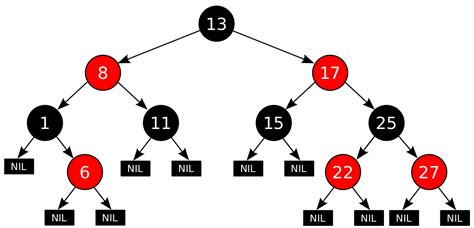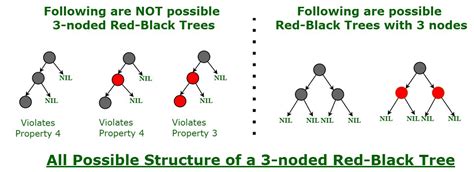Red Black Tree

The Red Black Tree is a self-balancing binary search tree data structure, which is a variation of the B-tree data structure. It is used to maintain a balance between the height of the left and right subtrees, ensuring that search, insert, and delete operations are performed efficiently. The Red Black Tree is a fundamental data structure in computer science, and its applications can be seen in various fields, including database indexing, file systems, and compiler design.
The Red Black Tree was first introduced by Leo J. Guibas and Robert Sedgewick in 1978, as a way to improve the performance of the B-tree data structure. Since then, it has become a widely used data structure in many applications, due to its ability to maintain a balance between the height of the left and right subtrees, ensuring that search, insert, and delete operations are performed efficiently. The Red Black Tree is also known for its ability to handle a large number of insertions and deletions, making it a popular choice for applications that require frequent updates to the data.
Key Points
- The Red Black Tree is a self-balancing binary search tree data structure.
- It maintains a balance between the height of the left and right subtrees, ensuring efficient search, insert, and delete operations.
- The Red Black Tree is a variation of the B-tree data structure.
- It is used in various fields, including database indexing, file systems, and compiler design.
- The Red Black Tree can handle a large number of insertions and deletions, making it a popular choice for applications that require frequent updates to the data.
Properties of a Red Black Tree

A Red Black Tree has the following properties:
1. Each node is either red or black.
2. The root node is black.
3. All leaves (null nodes) are black.
4. If a node is red, both its children must be black.
5. For any node, all paths from the node to its descendant leaves contain the same number of black nodes.
These properties ensure that the Red Black Tree remains balanced, and that search, insert, and delete operations can be performed efficiently.
Operations on a Red Black Tree
The following operations can be performed on a Red Black Tree:
1. Insertion: Inserting a new node into the tree while maintaining the balance.
2. Deletion: Deleting a node from the tree while maintaining the balance.
3. Search: Searching for a node in the tree.
Each of these operations is performed in a way that maintains the balance of the tree, ensuring that the tree remains approximately balanced, and that search, insert, and delete operations can be performed efficiently.
| Operation | Time Complexity |
|---|---|
| Insertion | O(log n) |
| Deletion | O(log n) |
| Search | O(log n) |

Advantages of a Red Black Tree

The Red Black Tree has several advantages, including:
1. Efficient search, insert, and delete operations: The Red Black Tree maintains a balance between the height of the left and right subtrees, ensuring that search, insert, and delete operations can be performed efficiently.
2. Ability to handle a large number of insertions and deletions: The Red Black Tree can handle a large number of insertions and deletions, making it a popular choice for applications that require frequent updates to the data.
3. Good cache performance: The Red Black Tree has good cache performance, which means that it can take advantage of the cache hierarchy to improve performance.
Disadvantages of a Red Black Tree
The Red Black Tree also has some disadvantages, including:
1. Complex implementation: The Red Black Tree has a complex implementation, which can make it difficult to understand and implement.
2. Higher overhead: The Red Black Tree has a higher overhead than other data structures, such as the binary search tree, due to the need to maintain the balance of the tree.
What is the time complexity of insertion and deletion operations in a Red Black Tree?
+The time complexity of insertion and deletion operations in a Red Black Tree is O(log n), where n is the number of nodes in the tree.
What are the advantages of using a Red Black Tree?
+The advantages of using a Red Black Tree include efficient search, insert, and delete operations, ability to handle a large number of insertions and deletions, and good cache performance.
What are the disadvantages of using a Red Black Tree?
+The disadvantages of using a Red Black Tree include complex implementation and higher overhead due to the need to maintain the balance of the tree.



